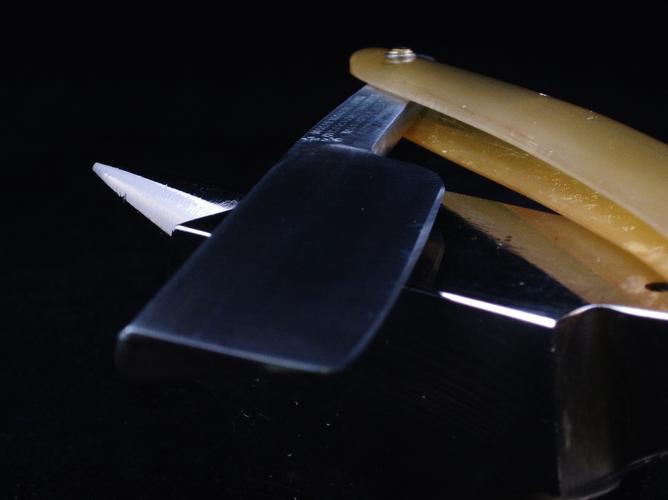Results 1 to 10 of 80
Thread: Douglas cutlery
Threaded View
-
06-23-2013, 04:22 PM #21At this point in time...




- Join Date
- Jun 2007
- Location
- North Idaho Redoubt
- Posts
- 26,987
- Blog Entries
- 1
Thanked: 13234 Really ???? A better Mousetrap huh !!!
Really ???? A better Mousetrap huh !!!
Back in my Nightclub days we used to basically bet on anything, we would sit around early in the evening waiting for the night to get rolling and just make up games to bet on
One of the popular ones was played with dollar bills and the numbers on them (a simple version of Liar's Poker)... Basically the object of the game was to use everyone's numbers and to keep making claims about what you had for numbers, added to what they all had, the claims would get more and more outrageous until somebody called BS, the bills would be shown and depending on the claims the money would change hands.. Tons of fun really, and a great way to pass the time..
So with that in mind, even though I have really tried not to post in this thread, after those 4 posts, I am finally having to call "BS" ...
You have some serious, shall I say politely "Mis-Conceptions" of the why's and how's of Vintage Straight Razors, rather than continue this "discussion" with somebody that is only aware of their own opinion. I would highly suggest that you take the time and initiative to take advantage of the vast resources that SRP offers to study and research why the razor makers have done things certain ways over the last 300 years... You might want to seriously study the grinds that have been done over the years and might want to learn the term Shoulderless and look at a Full Hollow Grind with that design as it blows your theory about shoulders and cracks out of the water ...
"Bevel size" is a direct equation of angle, it has nothing to do with blade thickness, trust me on this I am holding a near wedge in my hand right now a set of Calipers and a Micrometer... On the desk in front of me is one of your razors, interesting outcome of the measurements... (Note the small even bevel on the 150+ year old JR)

Could you tell me what angle yours are even designed for ???
Taking into account your grind and steel theories and even setting aside the inaccuracies of your statements, I could almost accept a "Wide" bevel, but on a new custom razor the thought of a wide and uneven bevel just does nothing for me... You can talk all the circles you want about Spring steel vs High Carbon steel and argue Scientific process, but what you can't hide is the uneven grinds...
You might try simply stating what steel you are using that would tell everyone here much more then the ambiguous "Carbon Chromium" you keep mentioning
The 1931 article is only one side of the stropping argument you might try reading the other papers also to get a fuller understanding of all the theories.. (note the word theories, there is NO proof)
BTW before you say I should try your razors, please don't.... I have honed and shaved a razor(s) from just about every custom maker out there, including 5 of yours...
My final advice:



 89Likes
89Likes LinkBack URL
LinkBack URL About LinkBacks
About LinkBacks







 Reply With Quote
Reply With Quote